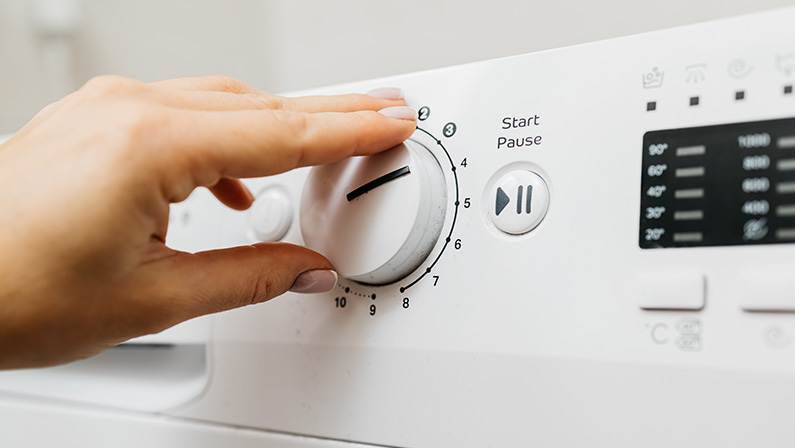Keeping your bedding fresh and clean is essential for comfort and hygiene, but many avoid washing comforters due to their size or fear of damaging them. Learning how to wash a comforter properly will help maintain its loft, freshness, and comfort without stress.
This guide will walk you through how to wash comforters, dry them properly, and keep them fluffy for longer. By understanding how to clean a comforter effectively, you can keep your bedding fresh while protecting your washer and maintaining your comforter’s lifespan.
Why Is It Important to Wash Your Comforter Regularly?
Your comforter collects sweat, oils, dust, and allergens over time, even with a duvet cover. Regular washing removes buildup that can lead to odors, discoloration, and a less comfortable sleep environment. Washing comforters every few months keeps your bed cleaner and extends the life of your bedding.
What Should You Check Before Washing a Comforter?
Before learning how to wash a comforter, check key factors to avoid damage during cleaning. This will help you prepare your bedding and avoid shrinking, seam damage, or uneven filling distribution while washing a comforter in the washing machine.
1. Read the Care Label
Always check the care label before you wash a comforter. It provides fabric-specific instructions that indicate water temperature, cycle type, and if it requires professional cleaning.
2. Inspect for Damage or Weak Seams
Check your comforter for loose stitching, torn seams, or holes. Address these issues before washing to prevent them from worsening during the cleaning process.
3. Check for Stains and Spot Treat
Before washing comforter fabric entirely, spot-treat visible stains with a gentle stain remover. This increases the chances of stain removal without requiring harsh detergents.
4. Make Sure It Fits Your Machine
Ensure your comforter fits comfortably in your washer without being cramped. If it is too large, washing a comforter in the washing machine can damage the fabric and the washer.
5. Remove Covers or Attachments
Remove any duvet covers, decorative attachments, or clips before you wash a comforter. This prevents tangling and uneven cleaning during the wash cycle.
Can You Wash a Comforter in a Regular Washing Machine?

You can wash a comforter in a regular washing machine if it fits loosely and allows enough water and detergent to circulate. If your washer is too small, it is better to use a large-capacity washer or visit a laundromat to avoid damaging your washer or comforter.
What Is the Best Way to Wash a Comforter at Home?
Before starting comforter cleaning, prepare your washer, detergent, and settings to ensure thorough but gentle washing. This helps maintain the loft while removing dirt and allergens.
1. Check the Care Label First
Always start by reviewing the care label for specific instructions on water temperature, recommended detergents, and cycle settings to wash a comforter safely.
2. Use a Large-Capacity Washer if Possible
Using a large-capacity washer provides enough space for water and detergent to move through the comforter evenly. This prevents lumps and incomplete cleaning.
3. Choose a Mild Detergent
Select a gentle, mild detergent to protect the fabric while effectively cleaning it. Harsh detergents can damage fillings and fabric, reducing the lifespan of your comforter.
4. Select the Right Settings
Use a gentle or bulky bedding cycle with cold or warm water. This protects the stitching and prevents damage while ensuring a thorough clean.
5. Dry It Thoroughly
Drying is essential after washing comforter fabrics to prevent mold and mildew. Use low heat and add dryer balls or clean tennis balls to help redistribute the filling and maintain fluffiness.
How Do You Dry a Comforter Properly?
After washing a comforter, place it in a dryer with a low heat setting, using dryer balls to break up clumps and maintain even filling distribution. Periodically remove and shake the comforter to help it dry evenly. Ensure it is completely dry before storage to avoid mildew.
How Do You Keep a Comforter Fluffy After Washing?
To keep your comforter fluffy, dry it with dryer balls and avoid over-drying on high heat. Shake it out several times during the drying process to prevent filling from clumping together. Once dry, give it a good fluff before placing it back on your bed.
When Should You Consider Professional Cleaning for a Comforter?

Sometimes, the best way to wash comforter fabric is by seeking professional help, especially for delicate, oversized, or down-filled comforters.
When the Care Label Says “Dry Clean Only”
If your comforter’s care label specifies dry clean only, take it to a professional cleaner to avoid damage or shrinkage.
When It’s Too Large for Your Washer or Dryer
When your comforter is too bulky for your washer or dryer, professional cleaning prevents equipment damage and ensures a thorough clean.
When It Has Tough Stains or Odors
For tough stains or persistent odors that do not go away with home washing, professional cleaning provides deeper treatment without damaging the fabric.
When You Want to Extend Its Lifespan
Routine professional cleaning can help preserve the integrity of your comforter, especially if it is made of down or high-quality materials.
When Convenience Matters
If you do not have the time or space to handle washing comforters yourself, a professional service saves you time while ensuring a clean, fluffy comforter.
What Are Common Mistakes to Avoid When Washing a Comforter?
Avoiding common mistakes will help you maintain your comforter’s quality and comfort after each wash.
1. Overloading the washer or dryer
Overloading your washer or dryer prevents your comforter from cleaning or drying properly. It can also damage your appliances.
2. Using harsh detergents or bleach
Harsh detergents and bleach can break down fabric fibers and fillings, reducing your comforter’s softness and lifespan.
3. Skipping the drying step or storing damp
Storing your comforter while it is still damp can cause mildew and odors. Always ensure it is fully dry before putting it away or using it on your bed.
Keep Your Comforter Clean and Cozy with Ease

Learning how to wash a comforter properly ensures your bedding stays fresh, fluffy, and comfortable without worry. By checking labels, using the correct settings, and drying thoroughly, you protect your investment and improve your sleep hygiene while avoiding common washing mistakes.
If you want the easiest, most effective way to handle comforter cleaning, visit SpinXpress Laundry, the best laundromat in Chicago, IL. We offer large-capacity machines perfect for washing comforters and experienced staff ready to assist you with your laundry needs. Contact us today!





